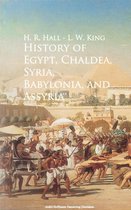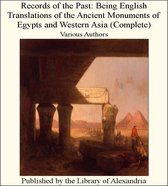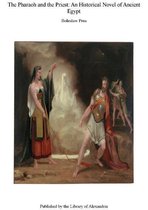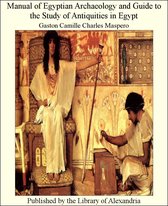History of Egypt, Chaldæa, Syria, Babylonia and Assyria (Complete) Ebook Tooltip Ebooks kunnen worden gelezen op uw computer en op daarvoor geschikte e-readers.
Afbeeldingen
Sla de afbeeldingen overArtikel vergelijken
- Engels
- E-book
- 9781465523808
- 24 februari 2021
- Adobe ePub
Samenvatting
Professor Maspero does not need to be introduced to us. His name is well known in England and America as that of one of the chief masters of Egyptian science as well as of ancient Oriental history and archaeology. Alike as a philologist, a historian, and an archaeologist, he occupies a foremost place in the annals of modern knowledge and research. He possesses that quick apprehension and fertility of resource without which the decipherment of ancient texts is impossible, and he also possesses a sympathy with the past and a power of realizing it which are indispensable if we would picture it aright. His intimate acquaintance with Egypt and its literature, and the opportunities of discovery afforded him by his position for several years as director of the Bulaq Museum, give him an unique claim to speak with authority on the history of the valley of the Nile. In the present work he has been prodigal of his abundant stores of learning and knowledge, and it may therefore be regarded as the most complete account of ancient Egypt that has ever yet been published. In the case of Babylonia and Assyria he no longer, it is true, speaks at first hand. But he has thoroughly studied the latest and best authorities on the subject, and has weighed their statements with the judgment which comes from an exhaustive acquaintance with a similar department of knowledge. Naturally, in progressive studies like those of Egyptology and Assyriology, a good many theories and conclusions must be tentative and provisional only. Discovery crowds so quickly on discovery, that the truth of to-day is often apt to be modified or amplified by the truth of to-morrow. A single fresh fact may throw a wholly new and unexpected light upon the results we have already gained, and cause them to assume a somewhat changed aspect. But this is what must happen in all sciences in which there is a healthy growth, and archaeological science is no exception to the rule. The spelling of ancient Egyptian proper names adopted by Professor Maspero will perhaps seem strange to many. But it must be remembered that all our attempts to represent the pronunciation of ancient Egyptian words can be approximate only; we can never ascertain with certainty how they were actually sounded. All that can be done is to determine what pronunciation was assigned to them in the Greek period, and to work backwards from this, so far as it is possible, to more remote ages. This is what Professor Maspero has done, and it must be no slight satisfaction to him to find that on the whole his system of transliteration is confirmed by the cuneiform tablets of Tel el-Amarna. The difficulties attaching to the spelling of Assyrian names are different from those which beset our attempts to reproduce, even approximately, the names of ancient Egypt. The cuneiform system of writing was syllabic, each character denoting a syllable, so that we know what were the vowels in a proper name as well as the consonants. Moreover, the pronunciation of the consonants resembled that of the Hebrew consonants, the transliteration of which has long since become conventional. When, therefore, an Assyrian or Babylonian name is written phonetically, its correct transliteration is not often a matter of question. But, unfortunately, the names are not always written phonetically. The cuneiform script was an inheritance from the non-Semitic predecessors of the Semites in Babylonia, and in this script the characters represented words as well as sounds. Not unfrequently the Semitic Assyrians continued to write a name in the old Sumerian way instead of spelling it phonetically, the result being that we do not know how it was pronounced in their own language. The name of the Chaldæan Noab, for instance, is written with two characters which ideographically signify "the sun" or "day of life," and of the first of which the Sumerian values were ut, babar, khis, tarn, and par, while the second had the value of zi.
Productspecificaties
Inhoud
- Taal
- en
- Bindwijze
- E-book
- Oorspronkelijke releasedatum
- 24 februari 2021
- Ebook Formaat
- Adobe ePub
Betrokkenen
- Hoofdauteur
- Gaston Maspero
- Hoofduitgeverij
- Library Of Alexandria
Lees mogelijkheden
- Lees dit ebook op
- Android (smartphone en tablet) | Kobo e-reader | Desktop (Mac en Windows) | iOS (smartphone en tablet) | Windows (smartphone en tablet)
Overige kenmerken
- Studieboek
- Nee
EAN
- EAN
- 9781465523808
Je vindt dit artikel in
- Categorieën
- Taal
- Engels
- Boek, ebook of luisterboek?
- Ebook
- Beschikbaar in Kobo Plus
- Beschikbaar in Kobo Plus
- Beschikbaarheid
- Leverbaar
Kies gewenste uitvoering
Prijsinformatie en bestellen
De prijs van dit product is 4 euro en 99 cent.- E-book is direct beschikbaar na aankoop
- E-books lezen is voordelig
- Dag en nacht klantenservice
- Veilig betalen
Rapporteer dit artikel
Je wilt melding doen van illegale inhoud over dit artikel:
- Ik wil melding doen als klant
- Ik wil melding doen als autoriteit of trusted flagger
- Ik wil melding doen als partner
- Ik wil melding doen als merkhouder
Geen klant, autoriteit, trusted flagger, merkhouder of partner? Gebruik dan onderstaande link om melding te doen.








